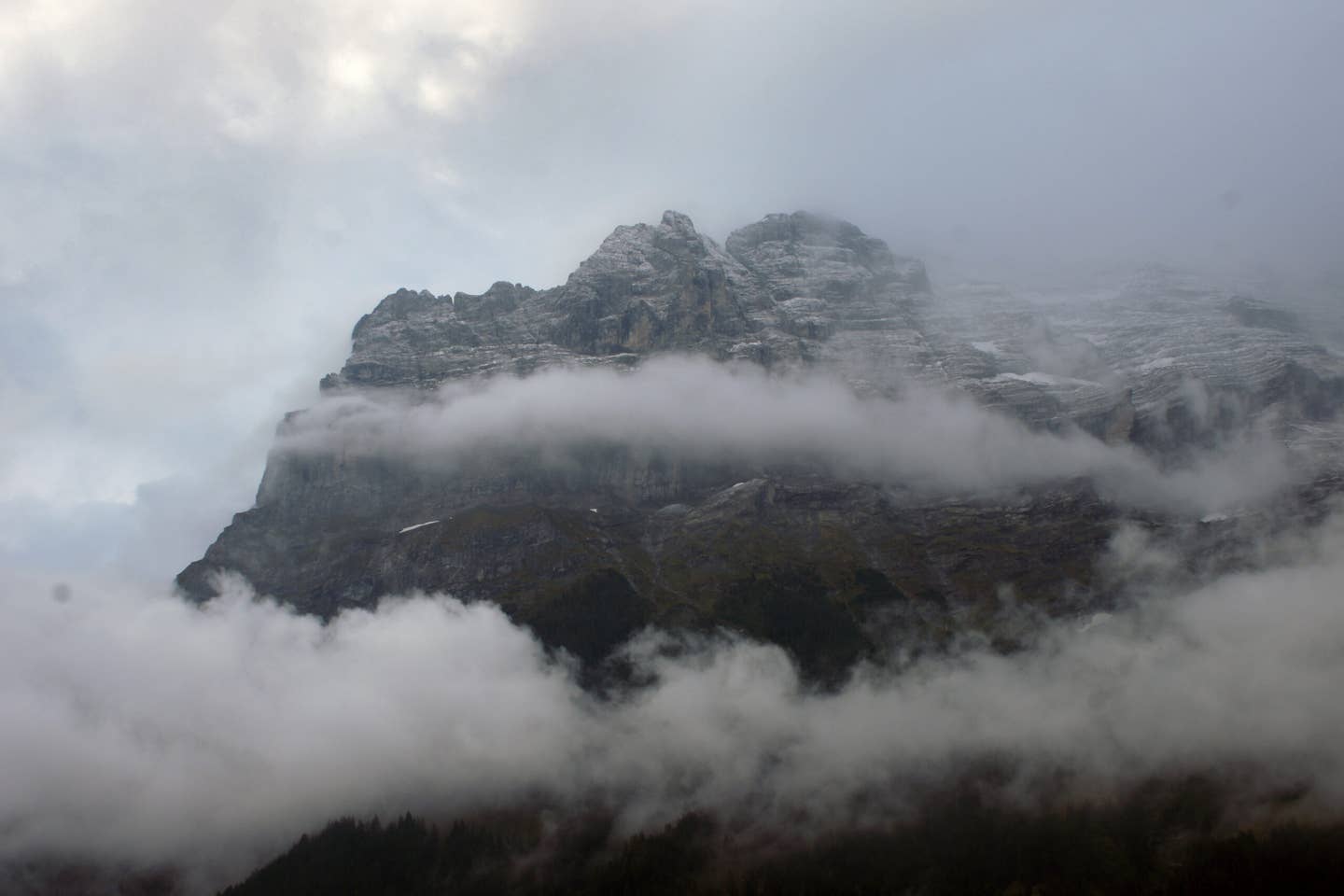

Teton Tested: Black Diamond’s Halo 28 Jetforce Avalanche Airbag
Popular Stories
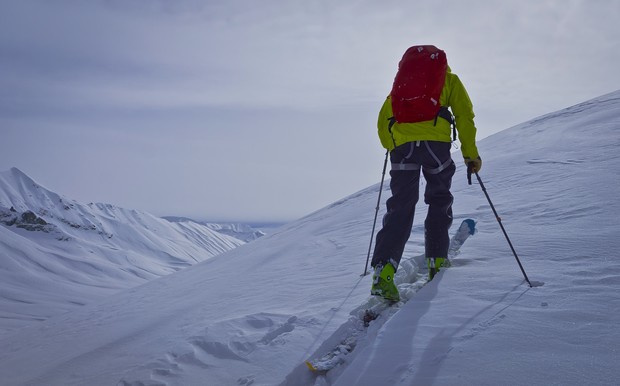 SASS Global Travel ski guide, Brand Director, and Mountain Operations Director Pete Connolly spent a lot of time with BD's JetForce airbag in Alaska last spring. Lucas Moore photo.
SASS Global Travel ski guide, Brand Director, and Mountain Operations Director Pete Connolly spent a lot of time with BD's JetForce airbag in Alaska last spring. Lucas Moore photo.
This past April, I took Black Diamond’s Halo 28 JetForce Pack with me on a RV-based snowmobile and touring access trip to a remote area of the Alaska Range in AK. It was the perfect trip to get a real feel for the pack under a wide range of uses that included slednecking, touring, bootpacking and, of course, skiing.
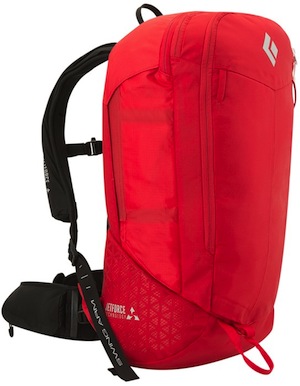
The Halo 28 is the mid-size option from Black Diamond designed for day-long outings. It features an avy-tool specific front pocket, upper goggle/extras pocket, a hip belt stash pocket, back-panel access to your main storage compartment, ice-axe attachment, diagonal ski carry, an exterior mesh helmet holder, reACTIVE suspension for comfort and fit and the JetForce Technology airbag system built in.
It is priced at $1,495, which is definitely at the higher end of the price range when it comes to airbags. This price is comparable to the ABS system, but more than twice what you would pay for a
BCA Float pack of the same size.
Why I Think A Proper Pack is So Important
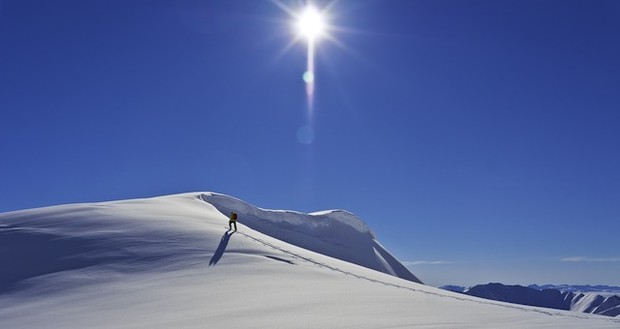 Pete spends most of his year outside, climbing to ski in the mountains, and so understands how important a good pack is. Lucas Moore photo.
Pete spends most of his year outside, climbing to ski in the mountains, and so understands how important a good pack is. Lucas Moore photo.
As a ski guide for SASS Global Travel and frequent backcountry traveler, I use my pack all day, every day while in the mountains, and it is one of the items I am most particular about. I care about the functionality and fit of my pack just about as much as I care about the skis on my feet or the boots that attach me to them. I am a believer in my kit–my full kit–from head to toe. Each item makes my day better, easier and more enjoyable.
A proper pack matters in terms of fit as well as its ability to hold the things I need. I open it and close it countless times throughout any day in the mountains. It holds my skis when I am booting up the last pitch. It carries all of my necessities and some of my non-necessities. And it is literally attached to my back while skiing, skiing being the whole point. It needs to work properly in every one of these ways day in and day out, no matter what conditions I am in or what accident occurs. I will use it as a backpack. That is a guarantee. I hope to never use the airbag. Ever.
The benefit of airbags as an avalanche safety tool is well documented, debated, discussed and not the point of this article. That said, my main gripe with airbag packs is not their potential false sense of security, but the fact that the pack itself seems to be an afterthought. This is not the case with the Halo 28. I was more than impressed with this as a backcountry skiing specific pack. Let’s save the airbag feature for later…
How The Halo 28 Performed As a Pack
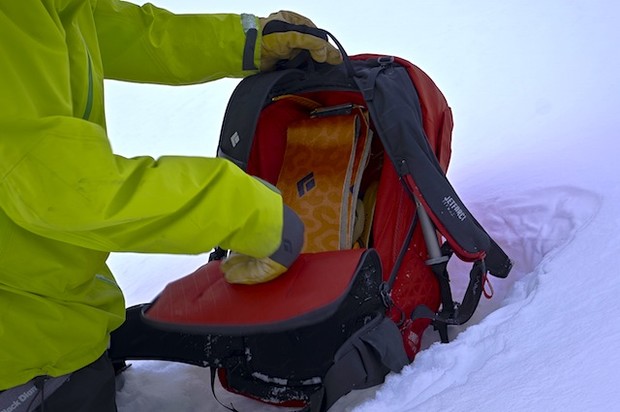 The back panel access is the JetForce's best feature as a pure pack. Lucas Moore photo.
The back panel access is the JetForce's best feature as a pure pack. Lucas Moore photo.
The back panel access is the best feature in my opinion. It opens wide and allows you to see everything you need. If you spend a lot of time bootpacking or ridge walking, being able to access your stuff with your skis still attached is essential. Check.
This pack fit more than I thought it would. My shovel, probe and ice axe went in the avy-tool specific pocket. 30 meters of 8mm rope, crevasse rescue gear, medical kit, a liter of water, extra gloves, and my skins flat against the back panel fit into the main compartment. It was tight, but this is about as much gear as I can imagine bringing with me. Extra lenses, sunglasses, camera, a couple Kind Bars went in the extra top pocket. My Leatherman fit perfectly in the stash pocket on my hip for easy access.
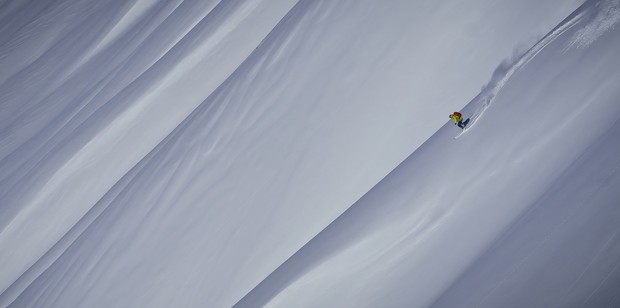 The reACTIVE suspension and solid waist strap properly dispersed the weight without weird shifting or bouncing that can occur with other pack designs. Lucas Moore photo.
The reACTIVE suspension and solid waist strap properly dispersed the weight without weird shifting or bouncing that can occur with other pack designs. Lucas Moore photo.
While skiing, with all of this on my back, it hugged me tight and didn’t negatively effect the perfection of my glorious AK turns through open bowls, on spines, or through tight couloirs. The reACTIVE suspension and solid waist strap properly dispersed the weight without weird shifting or bouncing that can occur. I wasn't a fan of BD’s ergoACTIVE suspension, but reACTIVE is a big improvement. It felt tight and right, and allowed me to ski the way I wanted to ski.
The downfall of the Halo 28 as a pack is the ski carry system. I am a fan of the diagonal carry over the A-frame or side-carry alternatives, but it has to be done right. The bottom loop is adjustable, which is great, although once you get it where you want it, tightening or adjusting it is near impossible due to the tiny metal strap synch mechanism that is not glove-friendly or even bare hand-friendly. This is not that big of a deal, although after getting my skis in place, I like the ability to really ratchet it down to avoid the flop.
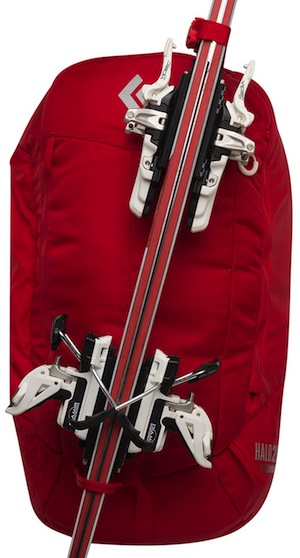
The real problem with the ski carry is the upper strap. This is tricky to describe, but here it goes: once the upper strap is wrapped around your skis and tightened as much as possible, it still allows for major flop. This is because the strap itself attaches to the exact same location on both ends. Rather than creating some separation where the strap attaches to the pack on one end and re-attaches a couple of inches away, creating much more stability, the strap originates from the same spot as it re-attaches, meaning that the skis themselves are not held against the pack at all. Instead, the skis have free range to flop side-to side.
This is painfully frustrating when bootpacking, scrambling, or in my case grabbing a high mark ride as high as possible on a snowmobile. I ended up using a ski strap through one of the helmet holder loops to add extra stability. It worked, but a fix like this is obviously not ideal. If you spend a lot of time using the ski carry system of your pack, this one does not come highly recommended. If you happen to be a snowboarder, this doesn’t matter, because there is no snowboard carry option on this pack.
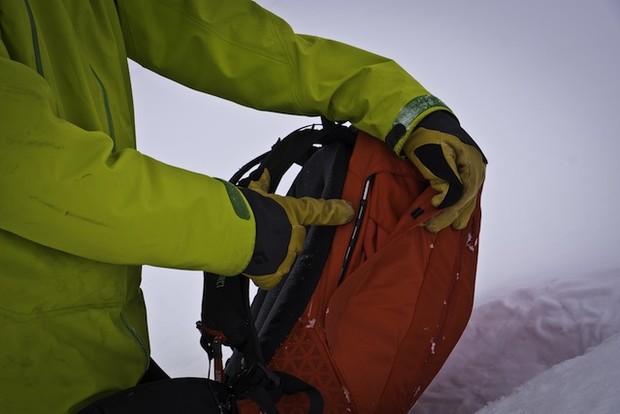 The airbag enclosure clips are too easily snagged during regular pack use. Lucas Moore photo.
The airbag enclosure clips are too easily snagged during regular pack use. Lucas Moore photo.
One other minor negative: the clips that hold down the flaps that enclose the airbag itself are too easily pulled open during standard pack use. I understand that they need to be able to release when the airbag is deployed, but they should stay put when the airbag is not in use. This doesn’t effect the function of the pack, but I like my equipment in a tight package.
How the Halo 28 Worked AS AN AIRBAG
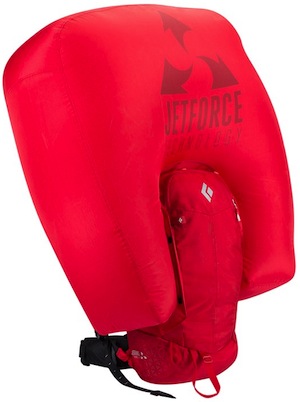
Black Diamond and PIEPS knocked it out of the park with the development of JetForce Technology. After testing this pack, I will not use a canister or cartridge system airbag ever again. The benefits to the lithium-ion battery-powered fan-based system are too numerous to even consider going in a different direction.
Sign Up For Our Newsletter
I use commercial airlines as a travel tool to get to great skiing locations around the globe. The convenience constantly blows my mind. I let an image of me in a covered wagon or on the Mayflower run through my head on a loop while surrounded by the masses of the stressed and disheartened airport population. Flying in these magic tubes over great distances in little amounts of time is awesome. That said, doing so with ski gear is not the easiest way to do it and after just dropping $1500 on your brand new airbag pack, you might want to bring it with you. The canisters or cartridges used in all other airbag packs (with the recent exception of
Arc’Terx’s Voltair) and their pressurization is a problem whether it is compressed air or nitrogen or some other gas. No airline will let you fly with it as your carry-on, and same goes for your checked bags. Yes, TSA may miss it in the latter, but they also might confiscate it.
The fix to the solution is to either get your compressed air canister filled or buy a new cartridge upon arrival. This may work in Anchorage or most places in Europe, but trying to find a place to do this in South America is not likely. Even bringing your empty compressed air canister to Japan is a problem. A specific stamp of approval, or at the very least a warning label in Japanese might work, but it's not guaranteed to get you through customs. Either way, it's a hassle that Black Diamond has made unnecessary and completely avoidable. The JetForce Technology is travel friendly and will not be a problem while flying commercially. This is a huge benefit.
The Benefits of the Jetforce IN AN AVALANCHE
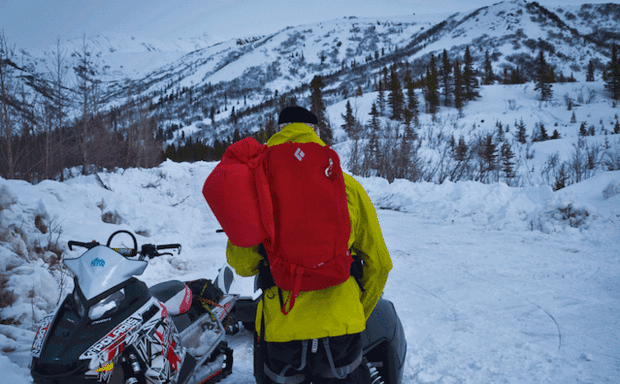 Deploying in just three seconds and with a system that reinflates and then deinflates the bag, the JetForce system is just about the best airbag technology going. Lucas Moore GIF.
Deploying in just three seconds and with a system that reinflates and then deinflates the bag, the JetForce system is just about the best airbag technology going. Lucas Moore GIF.
There are three benfits to the
JetForce system as a functioning avalanche airbag that help to diminish the risk of dying in an avalanche that I found to be worth noting. It is also worth noting that I did not test these features in an actual avalanche for this edition of Teton Tested.
#1: The JetForce airbag inflates in just over 3 seconds. It continues to pull in air to make sure that the bag stays fully inflated and can even maintain inflation with small tears and punctures as the fan continues to pull in air. This is especially beneficial in treed or rocky terrain. With the one-use canister/cartridge systems, a tear or puncture would mean loss of air, and in turn loss of the volume necessary to keep you above the snow. The JetForce is then designed to deflate after 3 minutes, leaving you with a potential air pocket or space to move if you are buried under avalanche debris.These factors alone make this a better avalanche airbag than any other.
#2: If you were to find yourself in more than one avalanche in one day, the multiple deployment capability of the battery/fan system makes it usable more than once out in the field. This is obviously a terrible scenario, and should lead to serious questions about your decision making, but I do see a benefit for a patroller doing control routes an a particularly sketchy day, or after a cautionary deployment in a sluff situation followed by an actual avalanche on a later run.
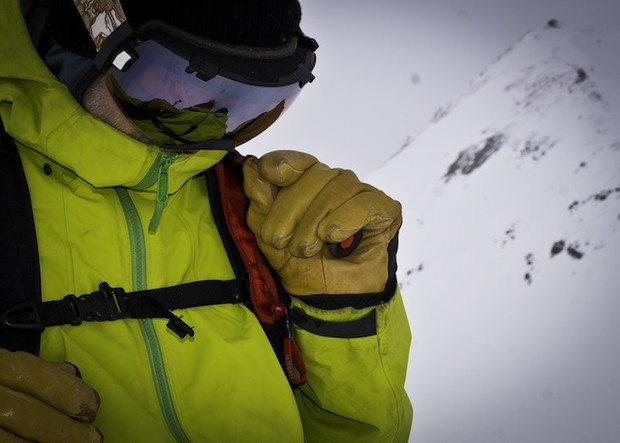 The JetForce's deployment mechanism is easy to pull and doesn't require a perfect grip to engage. Lucas Moore photo.
The JetForce's deployment mechanism is easy to pull and doesn't require a perfect grip to engage. Lucas Moore photo.
#3: The deployment mechanism is a handle that is quite easy to pull with and does not require the perfect grip. This means that you can grab it however possible and have a good chance at a proper deployment. Some of the other airbags have handles that must be gripped in a particular way or pulled in a very specific manner.
#4: The lithium-ion battery is rechargeable. This means that the bag can be deployed an unlimited number of times without any additional purchases or added costs such as the purchase of a new cartridge or having a canister filled. Additionally the battery holds a charge capable of deploying the bag at least four times per charge. This means that you can test the airbag system in the morning before your day to make sure it is functioning properly, as well as to get a good feel for how hard to pull in order to deploy. Being able to practice in this way makes for much more confidence.
#5: Charging is simple and plugs right into your wall via a cord built into the pack. I charged mine fully before a six-day trip, deployed the bag twice (once for testing, once for this great GIF) and still had plenty of charge left for the last day of the trip.
The Bottom Line
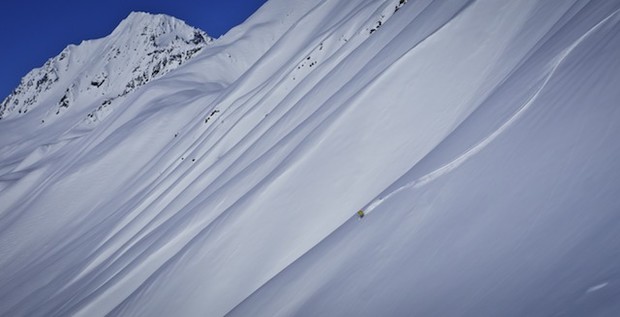 If you can afford it, the JetForce is the best airbag for your money. Lucas Moore photo.
If you can afford it, the JetForce is the best airbag for your money. Lucas Moore photo.
Overall, the Halo 28 JetForce Airbag Pack is as good as airbag packs get. It is a great option for daily use as a pack with the added benefit of an airbag system that far outperforms the cartridge or canister-based systems. Put these two reasons together with the fact that the pack itself is actually lighter than its competitors of similar volume, and you have a no-brainer as long as you are willing to throw down the extra dollars for it.

